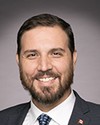I think that's a really interesting question. It's a great question, because the analogy might be to say that there are 3,000 people who signed the petition to support a particular MP, and the MP makes the conclusion that 3,000 people in the country support him or her. That conclusion is the type of insight we're talking about.
If the MP goes says, “I have 3,000 people supporting me, and that's why I think I should be able to do this, raise this much money or do these other things” and if that's not what their original intention was when they signed up and they were just signing it for some other reason, then we're in the same boat.
Clearly that's not the idea here. We're talking about aggregated concepts, of patterns and trends, and nobody would expect that the MP would go back and get consent from everyone for every conversation that he or she has about that 3,000 number.




